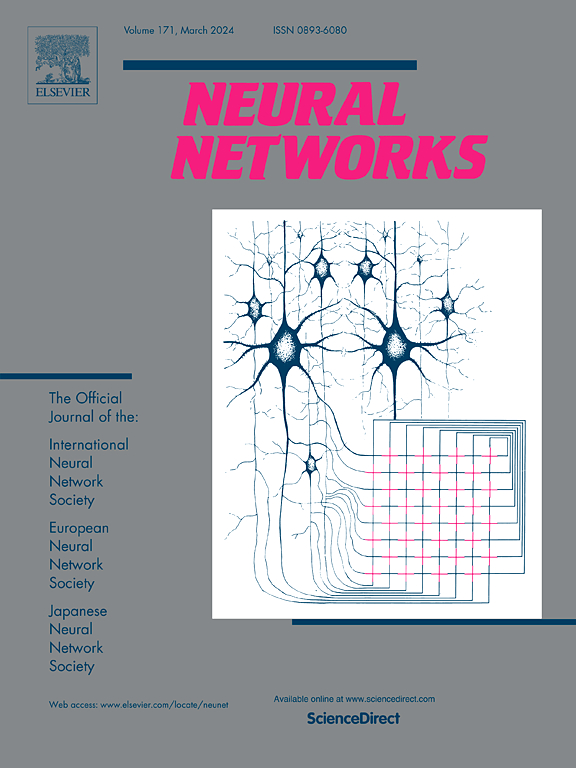Hypergraph contrastive attention networks for hyperedge prediction with negative samples evaluation
IF 6
1区 计算机科学
Q1 COMPUTER SCIENCE, ARTIFICIAL INTELLIGENCE
引用次数: 0
Abstract
Hyperedge prediction aims to predict common relations among multiple nodes that will occur in the future or remain undiscovered in the current hypergraph. It is traditionally modeled as a classification task, which performs hypergraph feature learning and classifies the target samples as either present or absent. However, these approaches involve two issues: (i) in hyperedge feature learning, they fail to measure the influence of nodes on the hyperedges that include them and the neighboring hyperedges, and (ii) in the binary classification task, the quality of the generated negative samples directly impacts the prediction results. To this end, we propose a Hypergraph Contrastive Attention Network (HCAN) model for hyperedge prediction. Inspired by the brain organization, HCAN considers the influence of hyperedges with different orders through the order propagation attention mechanism. It also utilizes the contrastive mechanism to measure the reliability of attention effectively. Furthermore, we design a negative sample generator to produce three different types of negative samples. We evaluate the impact of various negative samples on the model and analyze the problems of binary classification modeling. The effectiveness of HCAN in hyperedge prediction is validated by experimentally comparing 12 baselines on 9 datasets. Our implementations will be publicly available at https://github.com/jianruichen/HCAN.
利用负样本评估超图对比注意力网络进行超edge 预测。
超图预测的目的是预测多个节点之间的共同关系,这些关系将在未来出现或在当前超图中仍未被发现。传统上,它被模拟为一种分类任务,执行超图特征学习,并将目标样本分类为存在或不存在。然而,这些方法涉及两个问题:(i) 在超图特征学习中,它们无法衡量节点对包含它们的超图和相邻超图的影响;(ii) 在二元分类任务中,生成的负样本的质量直接影响预测结果。为此,我们提出了一种用于超边缘预测的超图对比注意网络(HCAN)模型。HCAN 受到大脑组织的启发,通过顺序传播注意机制考虑了不同顺序的超边缘的影响。它还利用对比机制来有效衡量注意力的可靠性。此外,我们还设计了一个负样本生成器,以生成三种不同类型的负样本。我们评估了各种负样本对模型的影响,并分析了二元分类建模的问题。通过在 9 个数据集上对 12 个基线进行实验比较,验证了 HCAN 在超边缘预测中的有效性。我们的实现将在 https://github.com/jianruichen/HCAN 上公开。
本文章由计算机程序翻译,如有差异,请以英文原文为准。
求助全文
约1分钟内获得全文
求助全文
来源期刊

Neural Networks
工程技术-计算机:人工智能
CiteScore
13.90
自引率
7.70%
发文量
425
审稿时长
67 days
期刊介绍:
Neural Networks is a platform that aims to foster an international community of scholars and practitioners interested in neural networks, deep learning, and other approaches to artificial intelligence and machine learning. Our journal invites submissions covering various aspects of neural networks research, from computational neuroscience and cognitive modeling to mathematical analyses and engineering applications. By providing a forum for interdisciplinary discussions between biology and technology, we aim to encourage the development of biologically-inspired artificial intelligence.
 求助内容:
求助内容: 应助结果提醒方式:
应助结果提醒方式:


